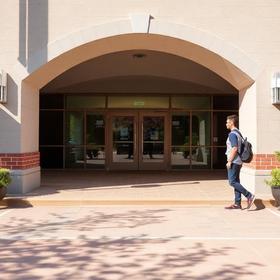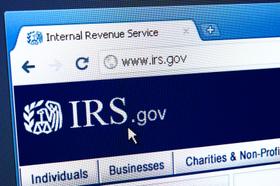Voucher programs have become a subject of significant interest in education policy, with almost a quarter of states implementing such programs. These initiatives aim to give parents more educational choices for their children, allowing them to use public funds to enroll their children in private or parochial schools.
This article overviews voucher programs in thirteen states—Arizona, Colorado, D.C., Florida, Georgia, Indiana, Louisiana, Maine, Ohio, Oklahoma, Utah, Vermont, and Wisconsin. In addition, it highlights the year each program became law and provides a brief description of each state's voucher program.
Arizona (1997)
Arizona's voucher program, the Empowerment Scholarship Accounts (ESA), was established in 1997. Initially limited to students with disabilities, the program has expanded to include other eligible student populations, such as children from military families and those attending low-performing schools. ESA provides parents with public funds through education savings accounts for various educational expenses, including tuition, textbooks, and tutoring services.
Colorado (2003)
Colorado's voucher program, the School Choice Grant Program, was enacted in 2003. The program aims to provide educational options for students from low-income families attending low-performing schools. Qualified students receive tuition grants at private schools participating in the program.
District of Columbia (2003)
The District of Columbia Opportunity Scholarship Program (OSP) was established in 2003. It is the only federally funded voucher program in the United States. The OSP offers scholarships to low-income families residing in the District of Columbia, enabling them to enroll their children in participating private schools.
Florida (1999)
Florida's voucher program, the Florida Tax Credit Scholarship Program, became law in 1999. The program provides scholarships to students from low-income families, allowing them to attend private schools. Scholarships are funded through tax-credited donations from businesses in the state.
Georgia (2007)
Georgia's voucher program, the Georgia Special Needs Scholarship Program, was enacted in 2007. It provides scholarships to students with disabilities, allowing them to attend private schools that meet specific requirements.
This video offers an overview of the Georgia voucher program.
Indiana (2011)
Indiana's voucher program, the Choice Scholarship Program, was established in 2011. The program offers income-based scholarships to eligible students, allowing them to attend private schools. The income eligibility criteria and scholarship amounts vary based on family income levels.
Louisiana (2008)
Louisiana's voucher program, the Louisiana Scholarship Program, was enacted in 2008. The program provides scholarships to low-income students attending low-performing public schools, allowing them to attend private schools of their choice.
Maine (1873)
Maine's voucher program, the Town Tuitioning Program, is one of the oldest voucher programs in the United States, dating back to 1873. The program allows students residing in towns without public schools to attend private schools in neighboring towns, with tuition paid by their home districts.
Ohio (2005)
Ohio's voucher program, the EdChoice Scholarship Program, became law in 2005. The program offers scholarships to students attending underperforming public schools, allowing them to attend private schools.
Oklahoma (2010)
Oklahoma's voucher program, the Lindsey Nicole Henry Scholarships for Students with Disabilities Program, was established in 2010. It provides scholarships to students with disabilities, enabling them to attend private schools that meet specific requirements.
Utah (2005)
Utah's voucher program, the Carson Smith Special Needs Scholarship Program, became law in 2005
Vermont (1869)
Vermont's unique educational program, the Town Tuitioning Program, was established in 1869. This program has been in operation for over a century and is considered one of the oldest forms of school choice in the United States. It provides educational options for students residing in towns that do not operate public schools at specific grade levels. Instead of establishing their own schools, these towns enter into tuitioning agreements with neighboring towns or independent schools to educate their students. Under the Town Tuitioning Program, eligible students receive public funds through tuition vouchers. These vouchers can be used to attend private schools or public schools in neighboring districts that have agreed to accept tuitioned students. The tuition amounts are determined through negotiations between the towns and the receiving schools, and they may vary depending on the specific arrangements in place.
This video offers an overview of Vermont's unique school choice program.
What parents need to know about vouchers
As a parent, you play a crucial role in shaping your child's education. One option that you might have heard about is a voucher program. This article explains voucher programs, how they work, and what parents need to know when considering them for their children's education. Whether unfamiliar with voucher programs or seeking more information, this guide aims to provide a clear understanding.
What are Voucher Programs?
Voucher programs allow parents to use public funds to pay for their children's education at private or parochial schools. Instead of attending their assigned public school, families can choose an alternative educational institution using the voucher or scholarship provided.
How do Voucher Programs Work?
Eligibility
Voucher programs typically have specific eligibility criteria, such as income levels, residence, or student characteristics (e.g., students with disabilities or attending low-performing schools). Therefore, reviewing the program requirements to determine if your child qualifies is essential.
Financial Assistance
If eligible, parents receive vouchers or scholarships representing a portion or all of the funds required to cover tuition and related expenses at the chosen private school.
School Choice
Parents can select a private or parochial school that participates in the voucher program with the voucher. It offers an alternative to the traditional public school system, providing families with more comprehensive educational options.
Important Considerations for Parents
Program Variations
Depending on eligibility criteria, funding mechanisms, and available school choices, voucher programs can differ between states. Therefore, it is essential to research and understand the specific details of the voucher program in your state to make informed decisions.
Financial Implications
While voucher programs can offset educational expenses, it is crucial to consider any additional costs not covered by the voucher, such as transportation, uniforms, or extracurricular activities. Understanding the financial aspects will help you plan accordingly.
School Selection
Take the time to research and visit various private schools to assess their curriculum, teaching methods, values, and overall environment. Then, consider your child's specific needs, interests, and learning styles when choosing a school that aligns with their educational goals.
Accountability and Quality
Investigate the performance and reputation of the private schools you are considering. Look for accreditation, academic outcomes, teacher qualifications, and student support services to ensure a high-quality education for your child.
Application Deadlines
Be aware of application deadlines for both the voucher program and the private schools. In addition, some programs may have limited enrollment capacity, so planning and submitting applications promptly is essential.
Potential Impact on Public Schools
It's worth considering the potential impact of voucher programs on public schools. Reduced enrollment due to voucher programs may affect resources and opportunities available in public schools. Understanding the broader educational landscape in your community can help you make a well-rounded decision.
Conclusion
Voucher programs allow parents to choose an educational path that suits their child's needs and aspirations. Parents can make informed decisions about their children's education by understanding the basics of voucher programs, eligibility criteria, financial implications, school selection, and the overall impact. Then, conduct thorough research, visit schools, and consider your child's unique circumstances to ensure the best possible educational experience.
Questions? Contact us on Facebook. @privateschoolreview
#Voucherprograms #Schoolchoice #Educationvouchers
#privateschoolscholarships #Publicfundsforprivateeducation
Source: ChatGPT














